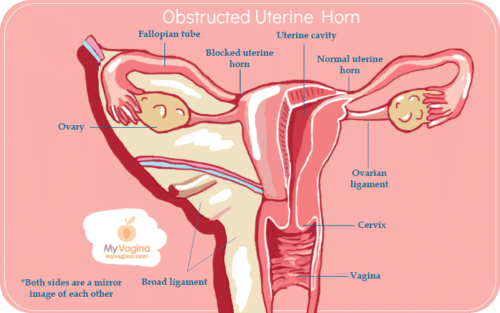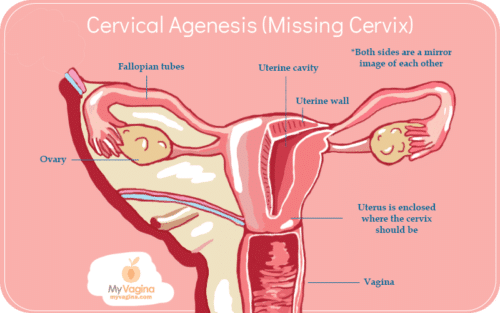Understanding precocious puberty
Precocious puberty is the early onset of pubic hair, breasts, vulvar changes, and height in a girl. Early puberty can occur for several reasons, which may affect a girl throughout life.
46,XX testicular difference of sexual development (DSD)
Folks with the 46,XX testicular difference of sexual development (DSD) are genetically female, but look (and feel) like males in every other way.
46,XX ovotesticular difference of sexual development (DSD)
The 46,XX ovotesticular genetic make-up means both ovarian and testicular tissue is present.
Turner syndrome
Turner syndrome is what life looks like with a missing X chromosome, in women. Turner syndrome is only found in females, with just one copy of the X chromosome present. Diagnosis might be made late, at puberty, when events don't pan out like they were expected to.
Obstructed uterine horn
An obstructed uterine horn is an anatomical abnormality whereby the uterus is not connected properly with the fallopian tubes.
Kallmann syndrome
Kallmann syndrome is a genetic disorder characterised by lessened or no sense of smell and late/no puberty. Girls with Kallmann syndrome may fail to get their period and have very small breasts, with both boys and girls with this condition likely to have other abnormalities present.
Persistent mullerian duct syndrome (PMDS)
PMDS is a disorder of sexual development that only affects males, but results in a person having a uterus and fallopian tubes. This ducting is present because of a failure for the mullerian ducts to transform under the influence of an enzyme.
Cervical hypoplasia
Cervical hypoplasia is an anatomical abnormality that results in a malformed cervix, which can prevent a period from arriving or cause pain. The shape and size of the cervix can determine whether assistance will be required for pregnancies.
Uterine hypoplasia
Uterine hypoplasia is the undeformed or absent uterus, an anatomical abnormality often found in conjunction with MRKH syndrome.
Uterus didelphys
A double uterus usually also means a double cervix and a double vagina - but not always.
Reifenstein syndrome
Reifenstein syndrome is an androgen insensitivity syndrome occurring in foetal development that results in improper sex organ development in boys.
Vaginal agenesis – absent vagina
Vaginal agenesis is the complete absence of a vaginal canal, caused by an interruption to normal development as a foetus. Reconstruction is a viable option in most cases.
Cervical agenesis
Cervical agenesis means the cervix - connecting the uterus and vagina - is absent, usually due to either surgical removal or an anatomical abnormality that occurred during development in the womb.
Cervical stenosis
Cervical stenosis is the narrowing - for whatever reason - of the cervix, the neck of tissue that joins the vagina and uterus. A narrow cervix can create a few issues with in-and-out flow between the uterus and the vagina, including sperm, periods and babies.
Swyer syndrome (XY gonadal dysgenesis, XY female)
Swyer syndrome means you are a chromosomal male (46, XY), but - aside from ovaries - the rest of you is 100% woman. This means you look and feel just like a woman, but your chromosomes say you are a man.
MRKH syndrome
MRKH syndrome is a congenital abnormality, whereby the uterus, top part of the vagina, and cervix do not exist or are very small. Ovaries are usually normal, since the ovaries run off a different system.
Differences of Sexual Development (DSD)
DSD is the multitude of in-between typical male and female presentation we see in human bodies. The variations range from typically female with every physiological twist and turn to typically male.
5-alpha-reductase deficiency (5 ARD)
5 ARD is a genetic blip that blocks the conversion of testosterone to dihydrotestosterone (DHT) in a growing foetus. DHT is required for the penis and testicles to develop in a male foetus, resulting in ambiguous genitalia. People with 5 ARD may be brought up as girls or boys.
Complete, mild, or partial androgen insensitivity syndrome (CAIS, MAIS, PAIS)
Androgen insensitivity syndromes mean babies born as genetic males have an androgen receptor problem that means they develop, more or less, into females, including gender identity, body shape, and sexual identity.
Variations in genitalia
Variations in genitalia can be seen on a new baby that don't match either a typical boy or girl, requiring further investigations.
- 1
- 2




